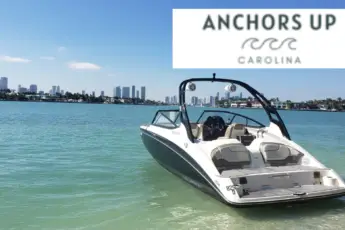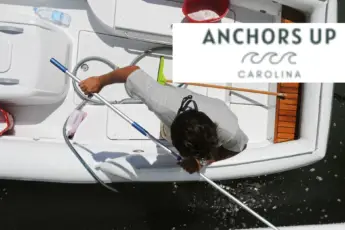One of the most challenging points of navigation are bridges in coastal waters. The combination of a narrow passageway and strong current put even the most experienced boaters on edge. Beyond navigation is understanding who has the right of way when boats are headed in opposite directions. Here are the dos and don’ts of navigating bridges while boating.
What You Should Do When Navigating Bridges By Boat
Without a doubt, there are things that you should and should not do when passing through a bridge in coastal waters.
Here is what you should do when passing through a bridge by boat.
Slow Down
Unfortunately, speeding through bridges is not taken lightly by law enforcement. It is imperative to slow down when passing through bridge spans.
I have known several boaters who received citations for remaining throttled up beneath a bridge. Importantly, you should maintain a bare steerageway. Bare steerageway is the lowest rate of movement through the water so that you can remain in control of the heading.
It should be noted that down current boats will likely move faster compared to up current boats simply to remain on course. Lastly, it is also essential to understand the rules of the road.
Allow The Down Current Vessel To Pass First
The vessel moving in the direction of the current has less control compared to the vessel heading into the current.
Holding a boat short of a bridge with the current at the stern presents a challenge for operators. Remember, the flow of the current is constantly pushing the boat in the direction of the bridge. For this reason, the captain is required to put the engines in reverse occasionally to hold the position.
In the situation where an up current boat is positioned on the opposite side of the bridge compared to the down current boat, the down current boat must be allowed to pass through the spans first.
I have seen inconsiderate boaters fail to give the right of way. Don’t be that person who fails to show respect.
Thank The Bridge Tender
First, I will start off by saying not all bridge tenders are the most friendly people. However, bridge tenders hear a lot of flack from boaters, especially unnecessary opening requests.
Without a doubt, the next time you require and request an opening, it is important to give a thank you via the VHF radio.
What You Shouldn’t Do When Navigating Bridges By Boat
Astonishingly, boaters navigating bridges tend to do more wrong than right. Here is what you should not do when navigating by boat through bridges.
Avoid Proceeding Until You Check Height Clearance
In the event you’re certain that your boat will not fit through a bridge span, you will need to request a bridge opening.
However, unsuspecting boaters have become hung up when passing through bridges because they failed to asses the clearance.
Unfortunately, not only are you causing damage to your boat, but the bridge as well. For this reason, move slowly toward the bridge and visually determine if it is safe to proceed.
Don’t Request A Bridge Opening If You’re Capable Of Making It Through
As I mentioned before, bridge tenders don’t take requests kindly if you haven’t exhausted all efforts to clear without an opening.
Bridge tenders do expect you to lower outriggers or other retractable objects if it allows you to proceed without opening the bridge. Many times have I pinged outriggers off the bottom of bridges.
Another reason to attempt to pass without an opening is to eliminate wait time. Most bridges do not open upon request but instead at set times. In some cases, you can be left waiting for 30 minutes or more. That’s a significant amount of time to sit and idle.
Don’t Proceed Through The Bridge Until You Checked For Traffic
The channel beneath a bridge is most often times narrow. While it is likely that two boats in the 18 to 30 foot range can pass side by side, it won’t be the case with large vessels.
So, in addition to monitoring the flow of the current, look ahead for oncoming traffic. Move out of the way of wide vessels so that they can pass without being confined to a tight space.
Unfortunately, boat accidents occur beneath bridges. Not only do vessels collide, but boats strike bridge structures, causing significant damage and injuries.
I can tell you first hand that boats quickly become set down by currents when passing through bridge spans. It is imperative to keep up enough speed to avoid hitting the bridge or other boats.
Now You Know The Do’s And Don’ts Of Navigating Bridges
The next time you’re passing beneath a bridge, keep the do’s and don’ts on the top of your head. Navigating bridges can be done safely by being smart. Unfortunately, fellow boaters may not be as wise, so you’ll need to remain vigilant.







